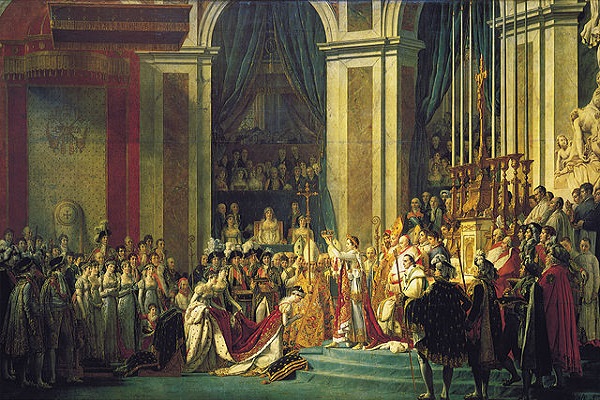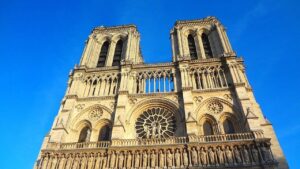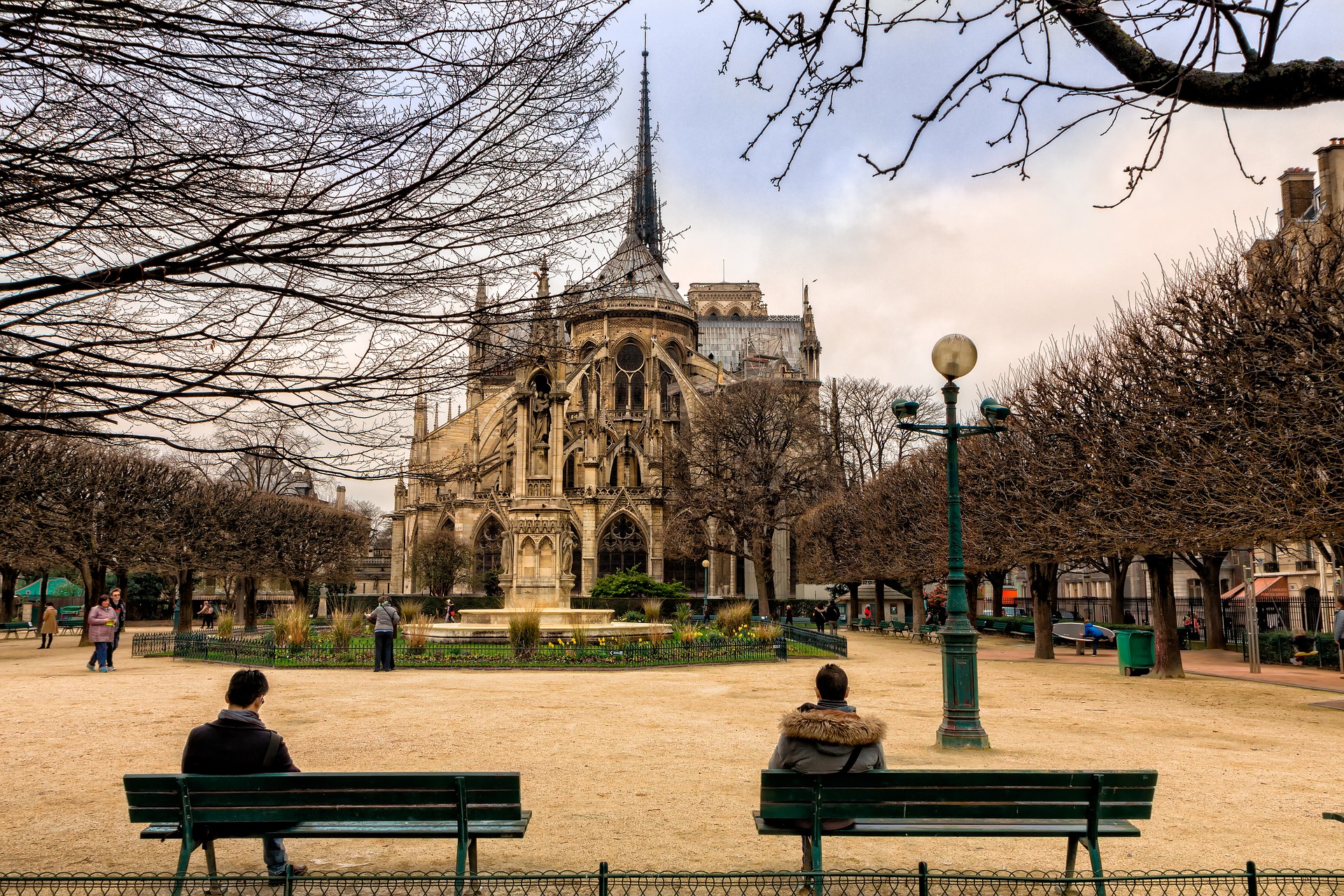The world mourns the tragic fire in central Paris, which last night engulfed Notre Dame cathedral, destroying its iconic spire. Today, we honor Notre Dame, symbolizing Paris, France, and Gothic architecture, reflecting on the many facts that make it iconic.
The Cathedral of Notre Dame, muse of Victor Hugo, holds numerous secrets and curiosities, enriching its Gothic history.
Scenario of historical events
Many important historical events have taken place in Notre Dame, starring very relevant characters in history. The famous cathedral hosted Napoleon Bonaparte‘s coronation on December 2nd, 1804. He granted himself a coronation from Pope Pius VII’s hands, attempting to break from Bourbon House traditions. Later it was Napoleon himself who crowned his wife, Josephine of Beauharnais.
Another remarkable historical event that took place inside Notre Dame was the beatification of Joan of Arc in 1909. The English burned the French heroine alive in Rouen on May 30th, 1431, making her a key figure in history.
Notre Dame Cathedral witnessed Henry VI of England’s coronation in 1429 and General Charles de Gaulle’s Requiem Mass.

Victim of sieges and demolitions
Construction of Notre Dame began in 1163 under Louis VII, facing numerous threats throughout its history. But was not until 1793 that it suffered the hardest of all its sieges. The French Revolution saw the destruction and theft of many of Notre Dame’s treasures.
One notable artwork in Notre Dame is the Gallery of the Kings of Judea and Israel, a strip of sculptures. This piece depicts the 28 kings of Judah, with a central figure accompanied by a resting lion at his feet. The “lion of Judah” in the sculpture symbolizes the Tribe of Judah, as described in the book of Genesis.
According to Hebrew tradition this tribe were ancestors of David, second monarch of the ancient Kingdom of Israel. Revolutionaries, mistakenly believing they symbolized French kings, toppled this group and beheaded each figure in it during the revolution. Their heads, found later in the 1970s, are now on display at the Cluny Museum.
In 1871, a civil uprising tried to burn the cathedral. Someone started a fire inside the cathedral using wooden chairs and benches, but fortunately, it didn’t spread.
The legend of the gargoyles
The gargoyles are one of the most characteristic architectural elements of Notre Dame Cathedral, whose main function is to evacuate the water from the rooftops. However, for some reason, the chimeras and gargoyles that adorn Notre Dame Cathedral are surrounded by a subtle halo of mystery, perhaps partly due to the legends that revolve around their presence in the monument.
Until the 18th century, society focused its greatest fears on the devil. He was held responsible for everything that could happen and people were constantly trying to protect themselves against it, especially in sacred places. And how can you protect yourself better from the demons than by driving him away? This is what the builders of cathedrals probably had in mind in the 13th century when they sculpted the first gargoyles.
Indeed, these emblematic stone sculptures representing evil creatures had a pragmatic purpose, to evacuate water, but also two symbolic purposes: to remind the faithful that they must constantly beware of the devil and repel evil with their ugliness. Thanks to their demonic appearance, they are the guardians of the holiness of the place. Today, the gargoyles placed at the vertexes of the cathedral towers watch the city expectantly, witnessing the evolution of the centuries over the City of Lights.
Did the Hunchback of Notre Dame really exist?
If there is a character closely related to Notre Dame Cathedral that is Quasimodo, or also known as the Hunchback of Notre Dame. The character created by Victor Hugo has been the object of many suppositions. Did he really exist or was he simply the result of the author’s invention?
The Hunchback of Notre Dame did not exist as Victor Hugo tells us in his novel, but there was a person who inspired the writer to create such a character. It was one of the sculptors who worked on the remodeling of the cathedral during 1820, who was known for being hunchbacked.
Victor Hugo, who at that time lived in the same district in which the sculptor worked, could see in him the character that would later give him worldwide fame.
The Legend of the Devil’s Gate
One of the best-known legends of Notre Dame Cathedral is that of the Devil’s Gate. This tells the story of a young locksmith, Biscornet, who was in charge of building the side door of the cathedral, known as Sainte-Anne’s Portal. Such a project overwhelmed the locksmith, who invoked the devil for help by entrusting his soul in exchange for a great result that would promote him to master locksmith.
The next day, Biscornet was praised and praised for such a wonderful forge masterpiece, achieving the status of Master. The devil, hastened to get the agreed soul of the locksmith, did not stop tormenting him until Biscornet was found dead in his bed.
Today, Sainte-Anne’s Portal and its marvellous wrought iron work are still object of speculation. The head of a demon can be found on it, and the gate’s extraordinary precision is hardly attributable to a young apprentice and to the rudimentary tools of the time. Biscornet’s work was replaced in 1860, although it is said that his soul runs through Notre Dame.
Notre Dame, France’s point zero
A big medallion can be found on the ground att the square where Notre Dame is located, reminiscent of the shape of a rose of the winds. This point indicates the point zero from which distances are measured in France, being also considered the center of the city of Paris.
In conclusion, and despite yesterday’s tragedy, Notre Dame remains today a referent of the Gothic style and one of the most elegant and stately monuments in Paris and the world. Here at My Private Paris we are optimistic about the future, hoping to continue to show Notre Dame’s marvels again very soon and for years to come.
Coming to Paris soon? Click here to request a custom tour of the city.
Article written by María Pasca





